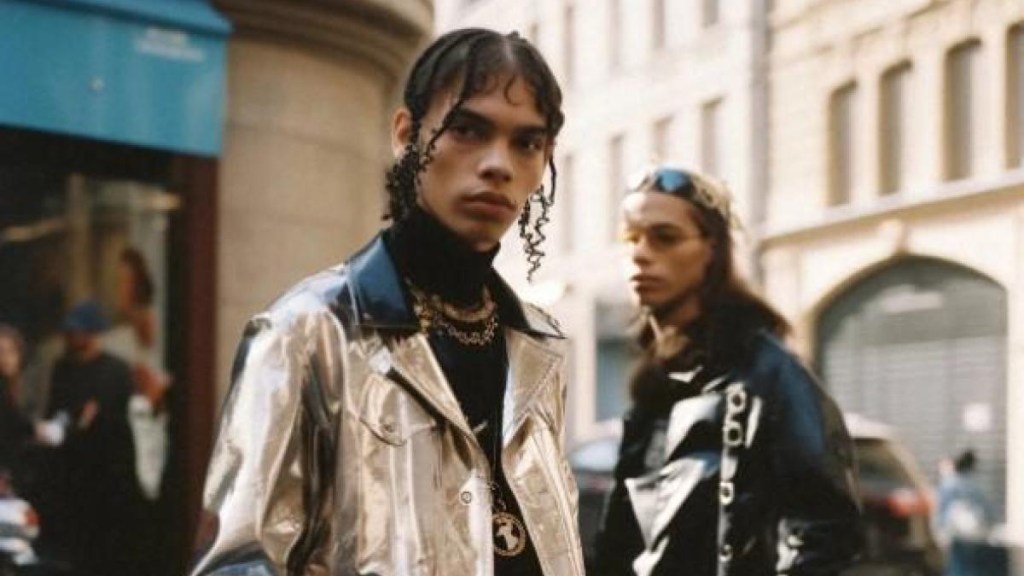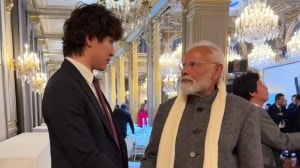At the inaugural AI Fashion Week in 2023, which took place in the digital space and at Soho’s Spring Studios in New York, the catwalk was embedded into 24 digital monitors that showcased non-existent clothes on avatar models, with beaches and dinosaurs in the background and prompts designed by more than 350 emerging designers. The designers created 30-40 virtual designs each on AI software like Midjourney, and their spectacular collection had designs ranging from Paco Rabanne’s metal dresses to Issey Miyake’s pleated fabric, and Jean Paul Gaultier’s corsets.
The AI Fashion Week is just two editions old (2023 and 2024) but it has managed to create quite a buzz around its immersive and innovative fashion experiences on the ramp.
When most of the things around us have become AI- or tech-driven, the world of fashion can’t be left behind. According to a new report from Euromonitor International, AI is redefining creative processes and customer interaction, marking a turning point in how fashion businesses operate. A McKinsey report on generative AI and the future of fashion also states, “While still nascent, generative AI has the potential to affect the entire fashion ecosystem by using technology to help create better-selling designs, reduce marketing costs, hyper-personalise customer communications and speed up processes.”
The buzz
Last year, celebrated American fashion designer Norma Kamali, 79, collaborated with Gen AI creative studio Maison Meta to develop an AI model based on her 40-year archive, training it to understand her design DNA. She uses the tool to create consistent new collections, and the AI understands her brand’s look, whether it’s swimwear or dresses. Maison Meta has also worked with fashion retailer Revolve to develop new collections and explore trends like retro-futurism.
Similarly, luxury brand Balmain partnered with Ablo, an AI design tool, to customise a pair of limited-edition sneakers. Last year, for a Dior Haute Couture collection in collaboration with late artist Faith Ringgold, artisans of Chanakya International used AI to turn the mosaics created by Ringgold for the LA Subway Commission into life-sized embroidered panels, using repurposed glass and acrylic sheets.
US designer Hillary Taymour also used AI for the Spring 2024 collection of her label Collina Strada to create runway sculptures, clothing patterns, and prints. Texas-based luxury ready-to-wear and made-to-order fashion designer Bach Mai and Monse, too, used it to develop prints in their Fall 2024 collections. Brands like Moncler, Zegna, and Valentino are using AI technology for their campaigns, while Ralph Lauren has started testing generative AI use cases for copy-editing and graphics.
Even though the Indian fashion industry is yet to find its footing with AI, fashion designer Amit Aggarwal, who is known to use unconventional materials like recyclable polymer sheets and rubber into Indian silhouettes, says AI will continue to evolve as a collaborative tool, help designers to conceptualise, prototype, and create faster and with more precision, while also enabling sustainability.
“In my future work, I envision using AI to delve deeper into fabric innovations—creating smart fabrics that respond to environmental conditions or even emotional states. As AI tools improve, they will serve as a bridge between design vision and final product, making the process smoother and more inclusive,” he says.
Designer Gaurav Gupta also believes AI is revolutionising the approach towards creativity in fashion. “It enables us to work smarter, not harder, by improving efficiency and supporting our creative processes. AI is like a highly intelligent assistant that allows us to focus on the artistic aspects while it handles data analysis, trend predictions, and other time-intensive tasks,” says the designer.
Gupta, who has dressed Beyoncé for her World Renaissance Tour, Cardi B at the Grammys, Ashley Graham at the Oscars and the American actor and screenwriter Mindy Kaling at the Met Gala in May last year, uses AI to help visualise how fabrics will drape and move, saving time and materials during prototyping for his label Gaurav Gupta Couture.
“These tools don’t replace creativity—they just make the process faster and more informed, allowing us to focus on the artistic side of design,” he says.
In the fashion industry, product conversion times can range from 90 to 270 days, making it challenging to predict trends in advance without consumer-driven insights. “Our platform analyses both subtle and obvious influences shaping future consumer desires, enabling accurate trend forecasting. This approach blends AI with a deep understanding of the human zeitgeist,” says Kanika Vohra, co-founder of ICH Next, a homegrown fashion forecaster that uses AI for a vast range of services and analyses like colour trends, macro themes, pattern trends, etc, based on current research to explore new market opportunities. The company supports fashion/ lifestyle retail brands such as Myntra, Reliance Trends, AJIO, Tata Cliq Luxury, Nykaa and Amazon India, among others.
Creativity on top
It’s still early days, but AI is both a challenge and opportunity for designers as many feel there’s a substantial amount of manual and imaginative intervention required to perfect outfits and designs.
“For us, craftsmanship remains central to our ethos, representing skill, culture, and individuality that cannot be replicated,” say Delhi-based designer duo Abraham & Thakore.
Craftsmanship will never get lost, it will only be enhanced, says designer Suneet Varma. “No machine can understand the feeling of a hand-embroidered stitch or the history behind a handwoven fabric. Technology can assist but it will always be the human spirit and creativity that breathe life into garments,” he adds.
While nothing can really replace human creativity or evolution as experiments with unconventional materials, and redefine the very essence of fashion, designers like Aggarwal think of AI as a muse, not threat.
“In the contemporary era, craftsmanship in its true essence is still preserved, but we take AI as an enabler in the process of creation, where it aids the artisans with routine mandates. This way AI never overshadows the artisanal aspect, but complements it,” adds Aggarwal.
Abraham & Thakore, too, believe AI can coexist with traditional artistry, enhancing creative processes without diminishing the value of craftsmanship. “Looking ahead, we are exploring the use of AI for future catalogue shoots and e-commerce visuals for upcoming collections, ensuring it aligns seamlessly with our brand’s contemporary yet timeless narrative,” says Abraham.
According to Mumbai-based luxury label designer Vaishali Shadangule, who transforms authentic Indian handlooms into wearable works of art, creativity finds expression in different materials, weaving techniques, draping exercises, at different stages.
“I don’t use AI for this, I don’t even use digital information or even as inspiration; it is all personal sensations derived from the world of nature. But AI can help dramatically in saving costs (virtual samples and collections), supply chain efficiency (predictive in time stocks management), audience reach (identifying marketing targets, virtual showrooms and trial rooms), sustainability (efficient predictions, efficient cutting and patterns, virtual collections, etc),” admits Shadangule.
Transformative shift
The rise of AI and virtual fashion is reshaping how we design, consume, and experience clothing, with digital wardrobes and immersive virtual try-ons becoming increasingly common, feels designer Amit Aggarwal. “Wearable technology, including smart fabrics that track health or adjust to environmental conditions, will gain traction. In tandem with these advancements, fashion is becoming more inclusive, with greater attention to size diversity and gender fluidity, while blockchain technology offers transparency in sourcing and production practices,” he adds.
On the other hand, designer Suneet Varma sees AI as a helpful tool to speed up certain processes and reduce waste. “The beauty of fashion lies in the hands of artisans, in the patience of handwoven fabrics, and the love poured into every stitch. The future of fashion will be about using AI in harmony with the human touch—allowing technology to help, but always honouring the artistry that makes each piece unique,” he adds.
Nevertheless, AI will democratise fashion design, making it more accessible to emerging talents and consumers alike. “It’s an intersection of art, technology, and sustainability. From predicting trends to creating hyper-personalised shopping experiences, it will redefine how we design, produce, and engage with fashion. Yet, its true success will lie in complementing not replacing the artistry and heart of designers. In essence, AI is here to enhance, not overshadow. Together, we can craft a future where innovation and tradition coexist,” adds designer Gaurav Gupta.








